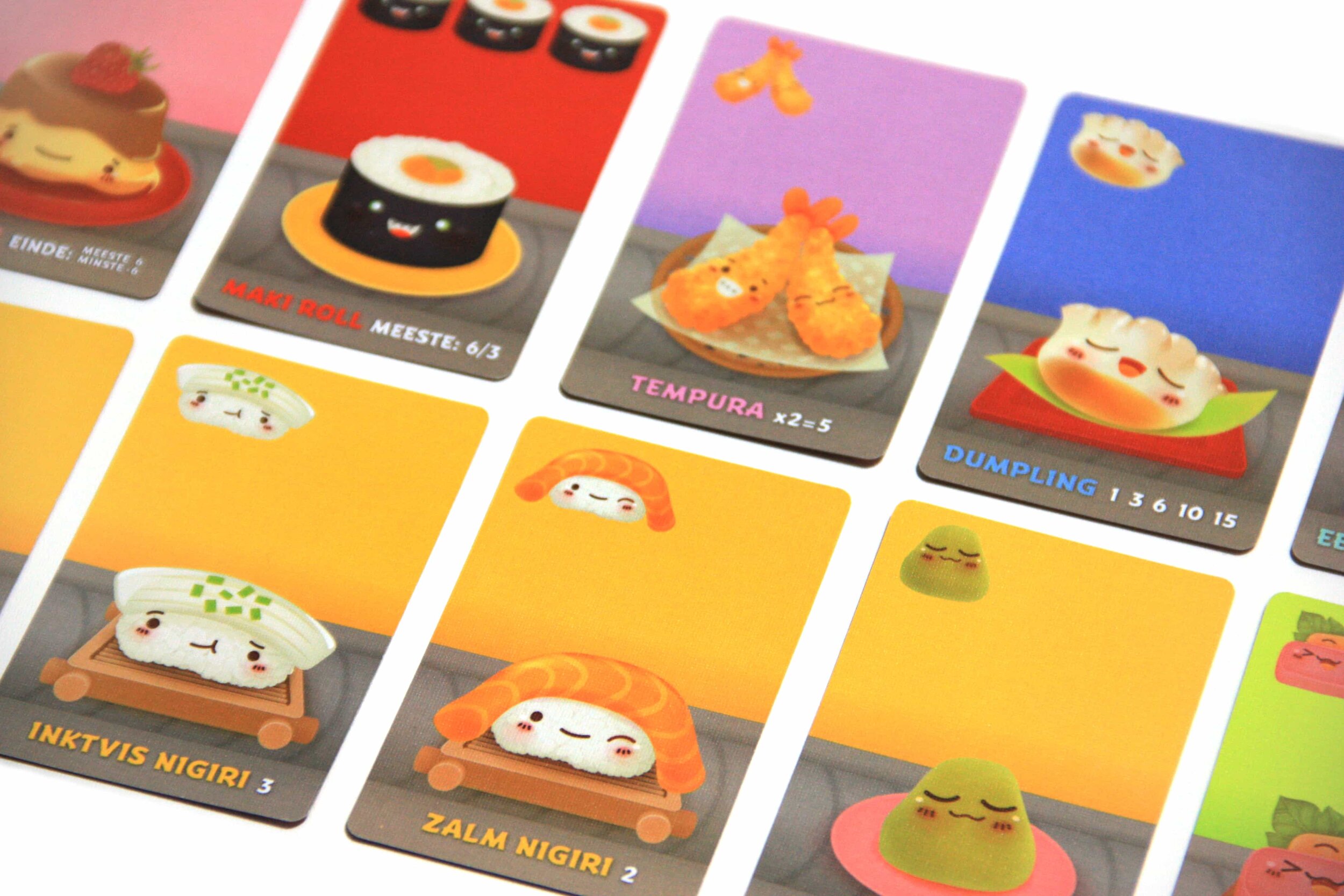Sushi Go!
Players: 2-5
Ages: 6 and up
Purchase: Buy on Amazon (affiliate link)
Math Ideas: probability, triangular numbers, logical deduction
Questions to Ask:
Which type of cards do you think are the best? Which are the worst?
What is the highest score you can get with 10 cards?
A couple of months ago, I shared my Holiday Gift Guide for 2019. The guide included some mainstays from the Haines household in 2019, as well as a couple of games we had barely played but seemed promising.
Well, it turns out I was definitely right in one case. My son has become totally obsessed with one card game in particular:
It's called Sushi Go!
How to Play
Sushi Go! is a card game with a structure that I'd never seen before. Let me explain:
Say you're playing with three players. Each player is dealt nine cards, each of which has a sushi-related food item on it. You choose one card to keep and place it face-down on the table, as do your opponents. Then, at the same time, you all reveal your choices.
That card stays in front of you, but then each player hands their other eight cards to the person on their left. Again, you look at your new deck, choose one to keep, reveal it, and pass the deck.
Because of this mechanic, every player finds out exactly what cards are available after a few rounds. My son and I absolutely love this aspect of the game. By the middle of the game, you know exactly what everyone is choosing between, and you have to make your best guess as to how they'll play, and how to counter their choice.
You earn points based on the cards you choose to keep, and those cards make the strategy of the game truly deep and interesting. One card, the sashimi, gives you 10 whole points, but only if you can collect a group of three sashimis. Since your opponents can see your choices each round, they might elect to block your efforts.
Or maybe they're too busy collecting dumplings. The first dumpling counts for 1 point,but the next one counts for 2, then 3, then 4 and so on. This compounding effect can rack up points quickly!
I won't go over every single card, but if you're interested, you can see the video below. You can also get a good look at the fantastic, playful artwork that the cards have.
Where's the Math?
Sushi Go! contains lots of math, both during the game and at the end of each round when points are totaled.
At the beginning of the game, your child will see a bunch of cards but only get to choose one of them. Let's say they are trying to get a trio of sashimi, for example. Their own deck has three sashimi, but your child can only choose one. How likely is it that the next deck will have another sashimi? And what are the chances that their own deck will still contain a sashimi when it returns to them?
These questions are great examples of probabilistic thinking. Some games, like chess or Connect 4, can be analyzed with total certainty. Everyone can see the location of all the pieces. Most card games, though, contain some element of hidden information. In that situation, your child needs to weigh the relative likelihood of different cards being present in the deck, or being chosen by their opponents. If you've played gin and agonized over which card to discard, you know the feeling of probabilistic thinking.
This style of thinking is valuable, mostly because it's so hard to become good at it. Humans are not naturally wired to evaluate probability accurately. We are sometimes risk-averse, other times overconfident in our predictions. Games are a great, low-stakes way for kids to learn just how good (or bad) their gut instincts for probability are!
Of course, there are all sorts of interesting math ideas in the adding up of points, which brings me to...
Questions to Ask
In Sushi Go!, players can earn points in a bunch of different ways. Some cards have clear point values, while others have compounding effects or only work in conjunction with each other. That's why your child would surely have an interesting answer to the question
Which cards do you think are the best? Which are the worst?
As you might guess, different kids have different ideas about which cards count as "the best." Sashimi, as discussed above, are worth 10 points, but only in a combination of three. On the other hand, squid nigiri is worth 3 points on its own, and 9 points if combined with wasabi
(Yes, this game sounds ridiculous when I type it out this way. But look at how cute the little nigiri look!)
If your child has strong ideas about which cards are the best, you an ask them the next challenging question:
What is the highest score you can get with ten cards?
Let your kid grab some cards and experiment! They'll try out different arrangements, testing variations, and getting much more comfortable with the cards along the way. By the time they've settled on an answer, they'll have a much more nuanced set of ideas about how to build the perfect deck.
Of course, you don't need to dig into any particular mathematical pathway with your kids. As long as you're playing the game and discussing strategy between rounds, you are helping your child develop their probabilistic thinking.
Odds are, that'll pay off over time.
Click here to buy Sushi Go! on Amazon (affiliate link)





